Microbusiness Summer Loans 2025: Flexible Funding for Seasonal Growth
Explore Microbusiness Summer Loans 2025 and discover how seasonal funding can fuel growth, cover gaps, and support expansion.
Smart loans for small summer wins.
Summer can be the most profitable — or the most unpredictable — time of year for many microbusinesses. With tourism, seasonal demand, and pop-up opportunities rising, having access to fast funding becomes critical. That’s where Microbusiness Summer Loans 2025 come in.
These specialized financial products are designed for small-scale entrepreneurs who need short-term capital to stock inventory, hire staff, launch campaigns, or stabilize operations during high-demand months.
If you’re a food truck owner, local artisan, freelance event planner, or anyone running a micro-scale venture, understanding these loans could change your business trajectory this summer.

Why Microbusiness Summer Loans Are Vital in 2025
The 2025 business landscape is more digital, mobile, and seasonal than ever. Post-pandemic recovery, inflationary pressures, and shifting consumer habits have forced small business owners to adapt rapidly.
Many microbusinesses are thriving in niche, time-sensitive markets. Summer, in particular, brings increased foot traffic, festivals, tourism, and outdoor events. These peak periods can lead to incredible profits — but only for those with the capital to meet demand.
Microbusiness Summer Loans are tailored to fill this gap. Unlike traditional term loans, they’re fast, flexible, and targeted for short-term summer needs.
What These Loans Typically Offer
Microbusiness Summer Loans 2025 typically include:
- Loan amounts: $1,000 to $25,000
- Repayment terms: 3 to 12 months
- Interest rates: Fixed or variable, typically between 8%–22%
- Approval time: As fast as 24–48 hours
- Use of funds: Inventory, equipment, staffing, advertising, rent, or emergencies
They’re often unsecured, meaning no collateral is required, and many fintech lenders provide options without strict credit score requirements.
Who These Loans Are For
These loans are meant for ultra-small businesses with limited access to traditional bank financing. Ideal borrowers include:
- Pop-up shop owners
- Independent service providers (hairdressers, repair techs, caterers)
- Seasonal tourism operators
- Craft sellers and street vendors
- Local delivery businesses
Even home-based microbusinesses can apply, as long as there’s documented income and a clear summer revenue plan.
How to Qualify in 2025
Qualifying for a Microbusiness Summer Loan is often simpler than for a traditional business loan. Most lenders will ask for:
- Proof of business operation (usually 6+ months)
- Monthly revenue of at least $2,000
- Basic personal identification
- Business bank account or digital wallet
Some platforms may allow new businesses to qualify if they demonstrate seasonal revenue potential or have strong pre-orders.
Where to Get One
You can access these loans through online lenders, microlending platforms, and some credit unions. Leading platforms in 2025 include:
- Kiva US: Great for zero-interest loans for community-based businesses
- Fundbox: Offers quick approval and flexible repayment
- BlueVine & OnDeck: Known for fast processing and larger loan limits
- Local economic development centers: Sometimes offer grants or subsidized loans during summer
Compare options carefully, especially around fees, early repayment penalties, and automatic withdrawals.
Smart Ways to Use the Funds
Once you get the loan, use it strategically. Popular summer uses include:
- Launching a new mobile stand at local fairs
- Hiring temporary staff for summer crowds
- Paying upfront for bulk inventory
- Upgrading signage or advertising during peak foot traffic
- Expanding into weekend markets or beach areas
Every dollar should be aimed at producing a return before repayment begins.
Risks and Considerations
Though summer loans can be powerful, they’re not without risks. Taking on short-term debt with aggressive repayment schedules can strain cash flow.
Always:
- Read the full contract
- Know your break-even point
- Avoid borrowing more than necessary
- Prepare a fallback plan if business slows unexpectedly
A well-used loan grows your business. A poorly managed one creates a burden.
What Makes 2025 a Good Year for It
Interest rates are stabilizing in mid-2025, and small business tools — like digital POS systems, social media ads, and mobile accounting — are more accessible than ever.
Consumer spending during warmer months is projected to rise, especially in local and tourism markets. This makes summer loans a strategic move, not just a safety net.
Conclusion
Microbusiness Summer Loans 2025 offer a timely, efficient way to boost your business during the hottest months of the year. With smart use and good planning, they can fund opportunities that turn one season of effort into year-round growth.
If you’re ready to take advantage of summer’s potential, this could be the funding solution your microbusiness needs.







